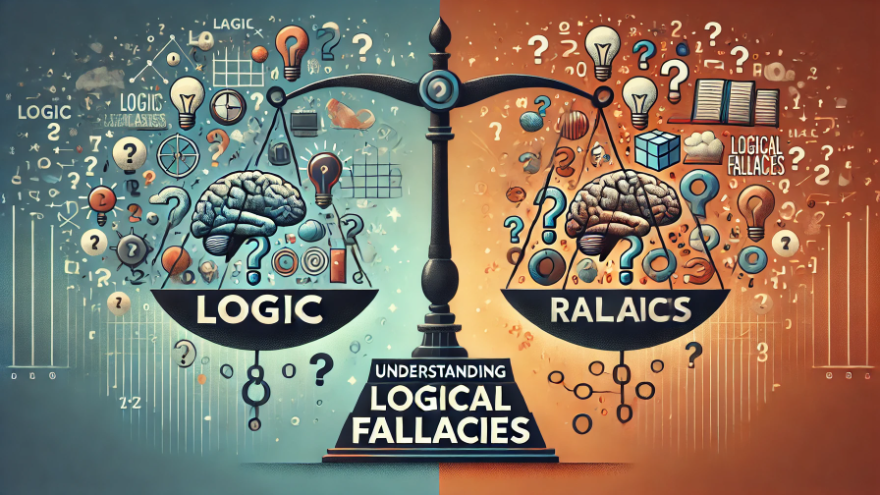This article explores logical fallacies, common errors in reasoning that undermine arguments. It provides explanations and examples for 22 fallacies, including Ad Hominem, Strawman Argument, False Dichotomy, and Appeal to Emotion, to enhance critical thinking and argumentation skills.

Logical fallacies are errors in reasoning that undermine the logic of an argument. While they often seem convincing, these flawed arguments lack validity and soundness, leading to misleading conclusions. Here’s a comprehensive guide to common logical fallacies, along with examples to illustrate each.
This fallacy occurs when an argument attacks the character of the individual making a claim, rather than addressing the claim itself.
Example:
A strawman argument misrepresents or exaggerates someone’s position to make it easier to attack.
Example:
This fallacy asserts that a proposition is true because it hasn’t been proven false, or vice versa.
Example:
A false dichotomy presents only two options or outcomes when more exist.
Example:
Circular reasoning occurs when the conclusion is included in the premise, offering no real support.
Example:
This fallacy involves drawing a conclusion based on insufficient or unrepresentative evidence.
Example:
This fallacy assumes that because one event followed another, the first caused the second.
Example:
This occurs when someone claims a proposition is true because an authority figure supports it, without presenting further evidence.
Example:
The bandwagon fallacy assumes something is true or good because it is popular.
Example:
This fallacy argues that a relatively small first step will inevitably lead to a chain of related (and often extreme) events.
Example:
A red herring introduces an irrelevant topic to divert attention from the original issue.
Example:
This fallacy manipulates emotions instead of presenting valid arguments.
Example:
A false analogy compares two things that are not sufficiently alike to support the argument.
Example:
This fallacy uses ambiguous language to mislead or misrepresent the truth.
Example:
This occurs when someone dismisses a criticism by pointing out the critic’s hypocrisy.
Example:
A non sequitur happens when a conclusion doesn’t logically follow from the premises.
Example:
This fallacy occurs when two things are presented as being equal when they are not.
Example:
This fallacy assumes that something is good or right because it is natural.
Example:
This occurs when someone believes past events affect the probabilities in independent events.
Example:
A loaded question contains a presupposition that traps the respondent.
Example:
Presenting only two options when there are more.
Example:
Exploiting grammatical ambiguity to create confusion.
Example:
Understanding logical fallacies is crucial for critical thinking and effective communication. By identifying these common errors, you can avoid falling prey to faulty reasoning and build stronger, more persuasive arguments. Whether in debates, discussions, or daily conversations, a solid grasp of logical fallacies empowers you to navigate the complexities of logic and rhetoric with clarity and confidence.
By recognizing these logical fallacies, you can become a more discerning thinker and evaluate arguments more critically.